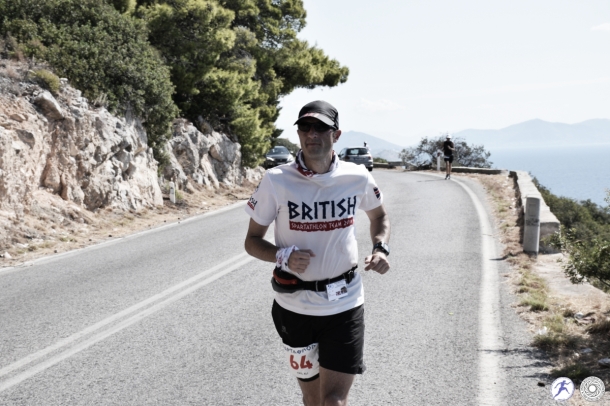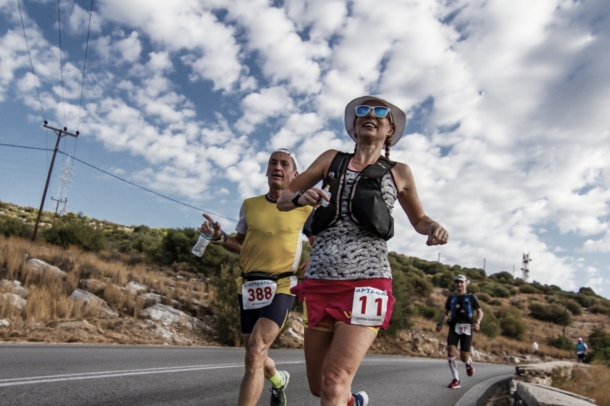
 Typical Qualifying StandardsCover a 120 km (men) or 110 km distance (women) in a 12-hour race
Typical Qualifying StandardsCover a 120 km (men) or 110 km distance (women) in a 12-hour race
To achieve a ballot qualifier, once again you need to be able to complete the following:
- Men = 75 miles (9.36m/m pace) for 12 hours
- Women = 68.75 miles (10.28m/m pace) for 12 hours
For an auto-qualifier, you need to have achieved:
- Men = 93.75 miles (7.40m/m pace) for 12 hours
- Women’s = 85.94 miles (8.22m/m pace) for 12 hours
Compared to the now defunct 100km qualifier this is a little more challenging but with 12 hour races typically taking place on a track this makes it more achievable as a track race offers easy access, support and good running conditions.
In the UK we have the Crawley 6/12/24 hour race in April (Track event), the Ellis Brigham Trailblaster 12 in June (Trail), Monster Ambit 12 in June (Trail), Gloucester Invitational and Elite in August and October respectively (Both track and offer 12 hour official splits)
*N.B. Flitch Way up until Jan 2024 offered an opportunity to secure late qualification as the organiser had converted the event from its original 100k format to a 12 hour event. Alas, Challenge Running has announced it will cease staging the event post 2024
Internationally, another alternative is the Sparta City Ultra 6/12/24 in February. The inaugural event took place in 2022, A great opportunity to check out Sparta and take in the awe inspiring sight of the legendary King Leonidas.

Finish a 100-mile race in 21:00 hours (men) or 22:00 hours (women).
To achieve a ballot qualifier, once again you need to be able to achieve the following:
- Men = 21 hour finish (12.56m/m pace for the 100 mile distance)
- Women = 22 hours (13.12m/m pace for the 100 mile distance)
If you are looking for an auto-qualifier then you need to achieve the following:
- Men = 15.45 hour finish (9.27 m/m pace for the 100 mile distance)
- Women = 16.30 hour finish (9.54 m/m pace for the 100 mile distance)
I would estimate an ‘average’ finishing time for a 100 mile race to be 24 hours based on when the peak number of runners finish so 3 hours quicker is definitely achievable for a lot of people. However, I would remind people that 21 hours is around the cut off point for 100 miles in Spartathlon so whilst your qualifying finish may place you mid-pack (a guess and I’ve not looked at data to calculate this) you might be towards the back at Spartathlon.
This is a common qualifying time based on the number of 100 mile races we have in the UK but be sure to select one where the terrain, environment, conditions and rules (buddy runners allowed?) may enable more running (i.e. Arc of Attrition not recommended).
In the UK we have the Centurion 100 mile events (Thames Path, South Downs, North Downs and Autumn 100), Robin Hood 100, Cotswold Way Century, West Country 100 miler as examples amongst others. A potentially fast option is the Track 100 (Oct) organised by Cockbain Events.
Cover at least 180 km (men) or 170 km (women) in a 24-hour race.
To achieve a ballot qualifier, you need to be able to achieve the following:
- Men = 180km/112.5 miles (12.48m/m pace in 24 hours)
- Women = 170km/106.25 miles (13.33m/m pace in 24 hours)
For an auto-qualifier the standard is as follows:
- Men = 140.63 miles (10.14m/m pace for 24 hours)
- Women = 132.81m (10.51m/m pace for 24 hours)
We have an abundance of 24 hour races in the UK with events such as the Thunder Run, Endure 24, Hope 24 amongst others aswell as track events such as Crawley and the Self-Transcendence 24 hour and Gloucester 24 (Invitational and Elite) August and October respectively.
One slight ‘quirk’ to consider is that most of the lapped trail 24 hours (such as Endure, Thunder Run) allow competitors to start their final lap before the end of the 24 hour period. Therefore, it is possible to run a final lap (these trail races are typically 5-6 mile loops) and cover a bit more distance in a 24 hour race. I am not saying this is ‘fair’ but merely pointing out how these results are calculated and reported as ‘24 hour’ races.
Finish a non-stop 200-220 km race within 29:00 hours (men) or 30:00 hours (women).
To achieve a ballot qualifier, once again you need to be able to average complete the 200-220km (125m-137.5m) distance as follows:
- Men = 29 hours (between 12.39 – 13.55m/m pace (depending on the race distance)
- Women = 30 hours (between 13.05m/m – 14.24m/m (depending on the race distance)
To achieve an auto qualifier, once again you need to be able to average complete the 200-220km (125m-137.5m) distance as follows:
- Men = 21.45 hours (9.29m/m pace for 200km distance)
- Women = 22.30 hours (9.49m/m pace for 200km distance)
In the UK, the Liverpool Leeds Canal Race is 130m (208km) and an option here.
Finish a longer than 220 km non-stop race within 36:00 hours (men) or 37:00 hours (women).
To achieve a ballot qualifier, once again you need to be able to complete (assuming a) 220km (137.5m) distance as follows:
- Men = in 36 hours (15.43 m/m pace)
- Women = 37 hours (16.09 m/m pace)
To achieve an auto qualifier, once again you need to be able to complete (assuming a) 220km (137.5m) distance as follows:
- Men = 27.00 hours (11.46 m/m pace)
- Women = 27.45 hours (12.06 m/m pace)
With a 220km + distance then several races in the UK fall into this category but events like the T184, Thames Ring, Lon Las, Viking Way (and others) are not suited to this due to the distance being well beyond the 220km and other elements such as limited support, terrain and self-navigational elements.
The Grand Union Canal Race and Kennet & Avon Canal Race are your most likely options. However the GUCR has its own specific criteria (see below). The KACR is 145m in length 232km and close to the minimum distance needed for this criteria and a good option here.
Finish Grand Union Canal Race within 34:00 hours (men) or 35:00 hours (women).
This criteria for this race specifically was changed a couple of years ago. (It could have been considered a ‘soft qualifier’ in the past).
To achieve a ballot qualifier, once again you need to be able finish the race as follows:
- Men = 34 hours (14.04 m/m pace)
- Women = 35 hours (14.29 m/m pace).
To achieve an auto qualifier, once again you need to be able to complete the distance as follows:
- Men = 25.30 hours (10.33m/m pace)
- Women = 26.15 hours (10.51m/m pace)
As mentioned above the Kennet & Avon Canal Race is a better option at present with a more forgiving cut off although these may be aligned in the future.
Cover a distance of at least 280 km (men) or 260 km (women) in a 48-hour race.
I’ve added this here but not aware of any 48 hour races in the UK so you may have to look abroad for races within this criteria.

Qualifier Achieved – What’s Next?
Once you have the qualifier than you will need to submit your application through the Spartathlon website.
This takes place towards the end of January and closes towards the end of February each year. Please check the Spartathlon website for confirmation of the exact dates and qualification criteria in case of nay changes. There is no advantage in entering this early.

The Ballot
The race is limited to 390 participants (with a very small number of discretionary places) and the ballot draw takes place in March.
From a UK perspective, we are limited to 25 entrants and demand for these places generally exceeds the number of places available.
In view of the above the likelihood of achieving a place is as follows:
- Auto qualifier places granted
- Ballot selection places granted
- UK will receive (up to) 25 places and Spartathlon race will allocate 390 places in total
If we exceed the UK cap or race entry limit then people are placed on a waiting list.
Therefore, we could have scenarios where 390 places are allocated but less than 25 UK names are selected drawn or 25 UK are selected before we reach the 390 race cap and UK entrants are then added to the waiting list as we have reached our country cap. This is a consequence of wishing to take part in a popular race.
If the UK entered more than 25 entrants who all have auto-qualifiers then 25 would be drawn by lot and others placed on the waiting list.
Statistically, you probably still have a better chance of running Spartathlon than the London Marathon ballot though!
If you are desperate to achieve a place in Spartathlon then the best option is to try and achieve an auto-qualifier. If you enter by way of a ballot qualifier then it’s down to the luck the draw.
Based on a quick look at previous British entrants, I would assess between 33-50% of entrants have had an auto-qualifier so essentially ballot entries could potentially be fighting for a dozen available places for the UK. However from 2020, the standard of auto-qualifiers has been raised. Therefore this is likely to mean less people with auto-qualifiers and more standard entry ballot places.

Links
Spartathlon Terms of Participation: http://www.spartathlon.gr/en/registration-en/registration-en.html
Note: This article was originally written by Paul Ali in 2018, updated in 2019 and subsequently by Ian Thomas in 2022 and 2023. All updates reflect changes to terms of participation and qualification standards. Importantly, this is a guide so please refer to the Terms of Participation on the official Spartathlon website for latest information.






